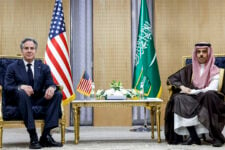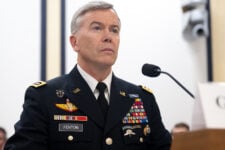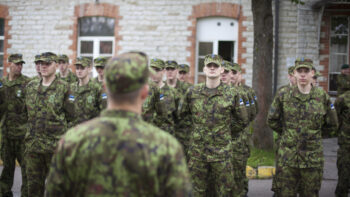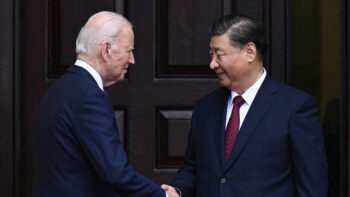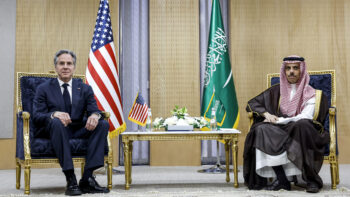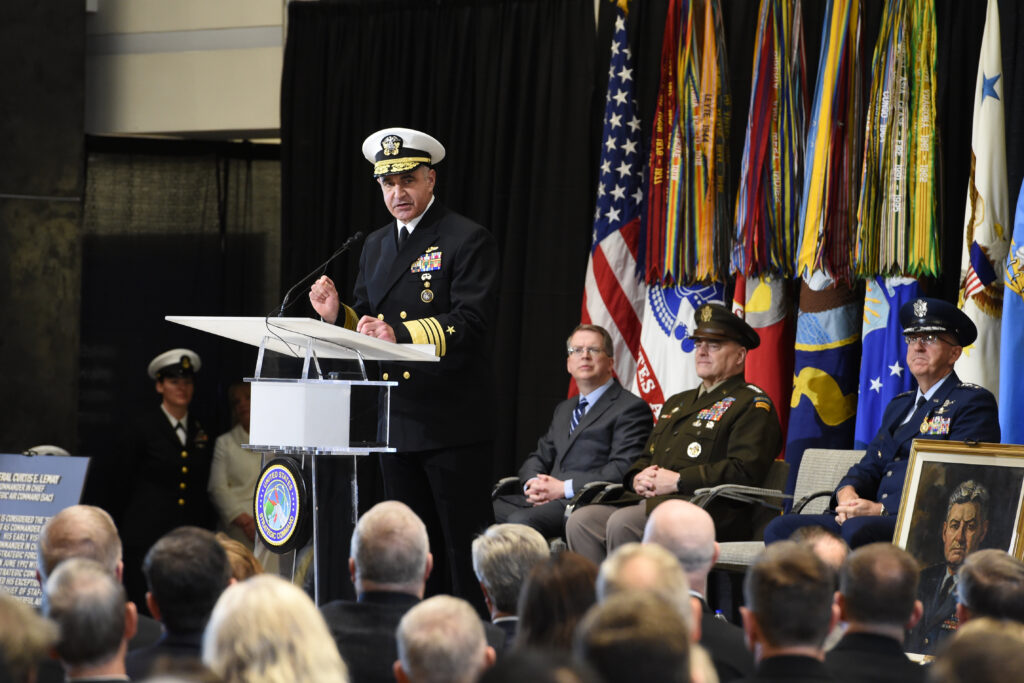
U.S. Navy Adm. Charles A. Richard, commander of U.S. Strategic Command. (USAF/Ian Hoachlander)
WASHINGTON: China’s and Russia’s partnership represents a “rapidly growing threat,” US Strategic Command’s Adm. Charles Richard warned yesterday.
“Both Russia and China have the ability to unilaterally, at their own choosing, go to any level of violence, to go to any domain, to go worldwide, with all instruments of national power,” the STRATCOM commander told an audience at the Hudson Institute. He added that the threat compounds if the two work together.
Today, China and Russia are cooperating on numerous fronts, perhaps most notably on energy issues. But the two countries appear to be testing the waters for broader partnerships, ranging from military and economic to scientific and technological.
During the talk, Richard noted, “We need to reexamine any number of our basic operating concepts starting with our escalation control. I think we need to be far more humble about our ability to control escalation in a crisis than we currently do. …If I can’t get strategic deterrence, and in particular nuclear deterrence to hold, no other plan and no other capability in the department is going to work as designed.”
That’s why, Richard said, it’s “a good time to be doing a National Defense Strategy Review, to be doing a Nuclear Posture Review and Missile Defense Review.”
The commander’s remarks come as the US completed its military drawdown in Afghanistan this week — a move viewed by some as a necessary shift in strategic focus to China — and as new research details the increasing cooperation between China and Russia on artificial intelligence, which strategists and analysts view as a critical military enabler in coming decades.
In view of this, “U.S. observers are watching this convergence between America’s two key competitors with increasing concern, if not alarm,” notes a research report published last month by Georgetown University’s Center for Security and Emerging Technology (CSET). The report, Headline or Trend Line? Evaluating Chinese-Russian Collaboration in AI, observes, “Both countries view AI as critical to their respective domestic and foreign policy objectives, and they are ramping up investments in AI-related research and development, though China’s investments far outweigh Russia’s.”
The report was authored by CSET’s Margarita Konaev, Andrew Imbrie, Ryan Fedasiuk, Emily Weinstein, Katerina Sedova, and James Dunham.
But is the China-Russia AI collaboration all it’s cracked up to be — at least right now? Sure, the report notes, the two countries are “keen to publicize” their cooperation, but their ambitions deserve a closer look to “separate headlines from trend lines.”
The report’s authors then present a wealth of data around the China-Russia AI collaboration to shed light on what’s really happening — and what’s not. The authors present takeaways around the scope, trends, and key areas of AI research, examining each over time to gauge relative growth or decline.
The report uses data to support a few key observations:
- While China-Russia joint research publications have increased, the number is still less than US-China and US-Russia joint publications on AI, and the China-Russia publications represent a tiny fraction of all Chinese AI research.
- China-Russia investments in AI have proven uneven, fluctuating up and down in recent years. China-Russia AI investments are higher than US-Russia AI investments, but US-China AI investments are higher than both.
“Our findings both confirm assessments of the expanding partnership between China and Russia and add an important caveat with regards to its scope and limitations,” the report says. “…The overall number of joint Chinese-Russian AI-related publications, however, remains relatively low. …The AI-related investment data tell a similar story—an upward trend in Chinese-Russian investment deals over the past five years, but the overall value remains relatively low.”
Therefore, the authors conclude, “Our findings expose gaps between Chinese and Russian aspirations and the reality on the ground, bringing greater accuracy and nuance to current assessments of Sino-Russian cooperation.”
The concern over a China-Russia military alliance is not likely to diminish if the current trajectory continues, although some have questioned how sturdy such a partnership would prove to be when tested, given a long history of distrust between the two countries.
Estonia ‘seriously’ discussing sending troops to ‘rear’ jobs in Ukraine: Official
The national security advisor to the Estonian president is the latest NATO nation official to weigh into the debate over the wisdom of foreign forces in Ukraine, while a senior British officer said it’s still “not a path that the [UK] Prime Minister wants to go down.”





